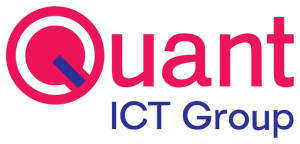
Achmea gaat datajungle te lijf met een model en veel denkwerk.
Lisa Esselink implementeert bij Achmea datavirtualisatie. De verzekeringsmaatschappij ontwikkelde een datamodel en probeert daarmee petabytes aan productiedata betekenis te geven. Het vergt veel denkwerk om uit de datajungle feitelijke antwoorden op conceptuele antwoorden te krijgen, legt ze uit.
Bij Achmea krijgen we heel wat voor onze kiezen. We verwerken dagelijks een immense hoeveelheid data die bovendien de komende drie jaar verviervoudigt. Met de inzet van slimme technologie willen wij de data-explosie optimaal gebruiken, terwijl we onze mensen en middelen minimaal belasten.
Datavirtualisatie moet uitkomst bieden. Daarbij koppelen we de datavraag los van het data-aanbod. Dat klinkt cryptisch en dat is het ook wel. De grootste uitdaging zit hem in het betekenis geven aan beschikbare productiedata. Dit doen we aan de hand van een conceptueel datamodel dat IBM zo’n vijftien jaar geleden ontwikkelde. Wij hebben het doorontwikkeld, zodat het past bij een verzekeringsmaatschappij als de onze.
Datamodel
In het model bepaalden we zo’n 1500 verschillende fysieke datasoorten (zoals naam, verzekeringsproduct en ingangsdatum), hun attributen (zoals voornaam, achternaam, productcode, dag, maand en jaar) en de waarden die daarmee samenhangen. Ook identificeerden we onderlinge samenhang.
Alle beschikbare en nieuwe databronnen delen we in volgens dit datamodel. Fysieke data zetten we daarbij om in conceptuele informatie waarnaar je inhoudelijk kunt zoeken. Soms lukt het pas na gesprekken met de diverse stakeholders om de betekenis en exacte bronlocatie van data te bepalen. Het proces hebben we inmiddels ingericht. Van onze externe dataleveranciers verlangen wij hetzelfde: ook zij moeten aangeven wat de betekenis, de onderlinge samenhang en de kwaliteit van hun data is.
De volgende stap is de ontwikkeling van de intelligentie die over de talloze databronnen heen speurt in de waarden. Dit is een belangrijke voorwaarde voor datavirtualisatie. De toepassing, die we nog moeten bouwen, maakt de vertaalslag tussen een conceptuele vraag van de gebruiker en het feitelijke antwoord daarop. Op deze manier krijgen we meer grip op data. Een vraag als “Welke klanten uit Nijmegen hebben een autoverzekering?” levert dan een concrete lijst met namen of klantnummers op.
Voordelen
Wat levert deze manier van datavirtualisatie ons op? Veel. Allereerst verbetert de effectiviteit en productiviteit van onze medewerkers. Zij kunnen met minder mensen meer werk verrichten dat bovendien meer toegevoegde waarde heeft. Ze beseffen dat het doel is om de juiste informatie te achterhalen, ongeacht het systeem dat zij hiervoor inzetten.
Daarnaast is het niet langer nodig om productiedata te kopiëren, bijvoorbeeld naar een datawarehouse. Het groeiend aantal petabytes dat we nu genereren, moeten we niet onnodig verdubbelen of zelfs verdrievoudigen. Dit zorgt namelijk voor hoge kosten voor dataopslag en -beheer en leidt tot synchronisatieproblemen. Analyses vinden on the fly plaats op de productiedata zelf. Vragen en bronnen zijn daardoor herbruikbaar.
Met datavirtualisatie hebben we bovendien meer controle over de datakwaliteit. De kwaliteit van de productiedata is een goede indicatie van de kwaliteit van de gehele keten. Loopt de kwaliteit terug, dan kunnen we in een vroeg stadium het probleem achterhalen en verhelpen. Dat scheelt later veel uitzoek- en herstelwerk en frustratie bij klanten en medewerkers.
Ten slotte helpt datavirtualisatie ons bij de implementatie van nieuwe ontwikkelingen, zoals de Algemene Verordening Gegevensbescherming (AVG), de sanctiewetgeving en het recht om te worden vergeten.
Denkwerk
De bovengenoemde transitie van een systeemgedreven naar een datagedreven organisatie is bij Achmea in volle gang. Het datamodel hebben we inmiddels ontwikkeld, het proces ingericht. Nu maken we ons op voor de verdere uitvoering van de datavirtualisatie, de ontwikkeling van de slimme toepassing die de talloze bronnen afspeurt.
Het vervolgtraject vergt vooral denkwerk van creatieve geesten die conceptueel meedenken over de betekenis van data binnen het domein van een verzekeringsmaatschappij. Dat zal altijd mensenwerk blijven: computers kunnen immers niet conceptueel denken.
Meer informatie over datavirtualisatie is te vinden in de whitepaper “Agile data integratie:van (big)data naar real time informatieâ€. Vraag deze aan bij Quant ICT Group BV, www.quant-ict.nl, info@quant-ict.nl, tel: 088-0882500
Source: www.webwereld.nl, Lisa Esselink is senior data architect bij Achmea








